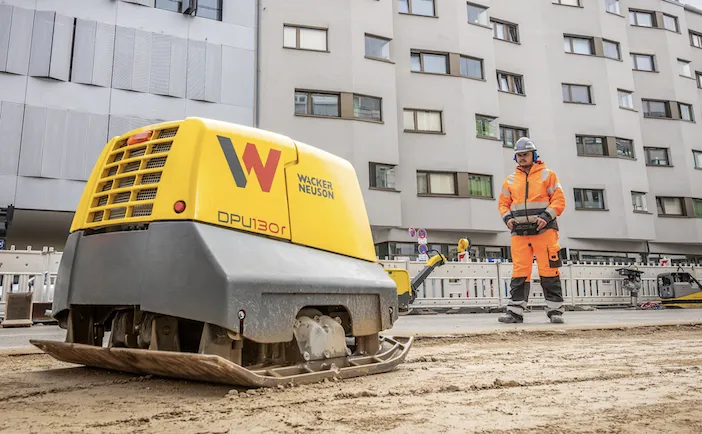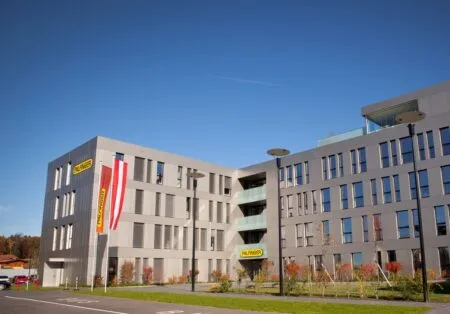Wacker Neuson Group has reported a successful first half of 2021. Revenue for the first six months of the year amounted to EUR 928.3 million, which is a rise of 16.5 percent relative to the previous year (H1/20: EUR 796.7 million). Adjusted for currency effects, this corresponds to an increase of 18.1 percent.
The Group reported an even bigger rise in earnings with profit before interest and tax (EBIT) rising 98.6 percent to EUR 100.1 million (H1/20: EUR 50.4 million). The EBIT margin amounted to 10.8 percent, which is an increase of 450 basis points (H1/20: 6.3 percent).
However, the highly unstable situation across global supply chains presented the Group with significant challenges, especially in the second quarter.
“The first half of the year was a success, but not easy,” said Karl Tragl, CEO of the Wacker Neuson Group. “We are back in growth mode and have seen a rise in profitability plus strong cash generation. Demand for our products is developing dynamically but recent weeks have seen our supply chains severely overstretched, and in some cases, interrupted. This situation presents us with major productivity and delivery challenges. We would like to thank our entire team, who are working extremely hard every day to get as many machines as possible onto our production lines and delivered to our customer.”
Europe and Asia-Pacific exceed pre-crisis levels
Business developed particularly positively in Europe and Asia-Pacific, where the Group has already managed to exceed 2019 revenue levels. In the Europe segment, which accounts for 79 percent of Group figure, revenue for the first half-year increased 16.7 percent relative to the previous year to reach EUR 737.1 million (H1/20: EUR 631.4 million). In the construction sector, key growth drivers included the domestic markets of Germany and Austria, as well as the UK, where the Group continues to benefit from high growth rates with its innovative dumper models. The Group’s business with compact equipment for the agricultural sector also developed positively. Revenue here reached EUR 174.7 million, which is an increase of 13.9 percent relative to a strong comparative baseline (H1/2020: EUR 153.4 million).
Revenue for Asia-Pacific in the first six months of the year rose 49.8 percent to EUR 32.8 million (H1/20: EUR 21.9 million). Business in Australia developed exceptionally positively. Buoyed by an extended dealer network, increased focus on independent rental companies and a product portfolio tailored to local needs, the Group more than doubled its revenue here for the first half of the year relative to 2020. The figure for H1 is also significantly higher than the pre-crisis figure for 2019.
Revenue for the Americas in the first half of the year amounted to EUR 158.4 million (H1/20: EUR 143.4 million), which is a rise of 10.5 percent. Adjusted for currency effects, revenue for this region grew by 18.1 percent. Customers remained cautious about investments at the start of the year in particular. However, business picked up markedly towards the end of the first quarter, buoyed in part by a gradual increase in demand from rental companies.
Clear increase in profitability
Profit before interest and tax (EBIT) for the first half-year amounted to EUR 100.1 million (H1/20: EUR 50.4 million). The EBIT margin came to 10.8 percent (H1/20: 6.3 percent). Profit was positively impacted by increased sales volumes and greater productivity at production plants compared with the previous year despite manufacturing processes being impaired by the effects of current strains and, in some cases, disruptions to supply chains. Profit was also bolstered by the Group’s ongoing stringent cost control measures.
The Group’s strategic goal is to sustainably reduce the net working capital ratio expressed as a percentage of revenue to 30 percent or lower. Following significant progress in recent quarters, the net working capital ratio came in at 26.7 percent at the close of the reporting period and thus reached the target range after having just fallen short of it at the close of the first quarter (March 31, 2021: 31.3 percent; December 31, 2020: 29.1 percent; June 30, 2020: 48.1 percent). The reduction relative to the previous year was attributable to a number of factors including the sharp drop in inventory. Inventory levels of finished machines decreased sharply here due to strong demand. Conversely, levels of unfinished machines more than doubled since the start of the year as a result of overstretched and, in some cases, interrupted supply chains.
Strong cash generation
At EUR 155.3 million, cash flow from operating activities for the first half of the year was clearly above the high prior-year figure (H1/20: EUR 124.8 million). This development was primarily fueled by the sharp increase in profit as well as the robust development of net working capital and the sale of non-current receivables. Discounting a fixed short-term investment in the amount of EUR 100 million, which was made to optimize the cash position, free cash flow amounted to EUR 133.5 million (H1/20: EUR 92.9 million).
Net financial debt decreased to EUR 79.4 million as a result of the positive cash flow development (December 31, 2020: EUR 122.9 million; June 30, 2020: EUR 363.1 million). Gearing is reported at 6.4 percent (December 31, 2020: 10.1 percent; June 30, 2020: 29.2 percent).
Strong demand accompanied by overstretched supply chains
Order intake developed dynamically for the Group in the first half-year. However, major delays and repeated disruptions to global supply chains meant that orders could not be fulfilled in the planned timeframes. “The situation with global supply chains will remain our biggest challenge for the foreseeable future. We need to maximize production flexibility so we miss as few manufacturing windows as possible but are increasingly reaching the limits of what is feasible here. In addition to this, we are facing ever-rising prices for raw materials, components and shipping. We expect these developments to have a greater impact on revenue and earnings in the second half of the year. We are, however, delighted to see such strong demand for our products and services as this shows us, once again, that we are meeting our customers’ needs,” adds Dr. Tragl.





